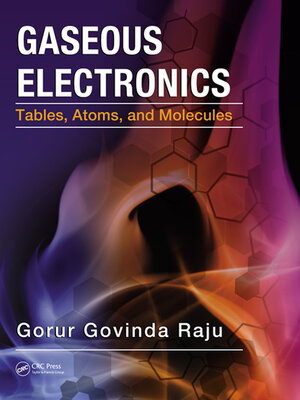
Sign up to save your library
With an OverDrive account, you can save your favorite libraries for at-a-glance information about availability. Find out more about OverDrive accounts.
Find this title in Libby, the library reading app by OverDrive.



Search for a digital library with this title
Title found at these libraries:
| Loading... |
With the constant emergence of new research and application possibilities, gaseous electronics is more important than ever in disciplines including engineering (electrical, power, mechanical, electronics, and environmental), physics, and electronics.
The first resource of its kind, Gaseous Electronics: Tables, Atoms, and Molecules fulfills the author's vision of a stand-alone reference to condense 100 years of research on electron-neutral collision data into one easily searchable volume. It presents most—if not all—of the properly classified experimental results that scientists, researchers, and students require for a theoretical and practical understanding of collision properties and their impact.
An unprecedented collection and analysis of electron neutral collision properties
This book follows a new user-friendly format that enables readers to easily retrieve, analyze, and apply specific atomic/molecular information as needed. In his previous work, Gaseous Electronics: Theory and Practice, the author first explored electron–neutron interactions. To clarify the complex fundamental processes involved, he cited as much experimental data on atoms and molecules as limited space would allow. Completing that task, this handy reference more fully compiles essential revised data on more than 420 atoms and molecules, arranging it into easily digestible chapters, sections, and appendices. Analysis parameters include total scattering, ionization, excitation, attachment cross sections, ionization and attachment coefficients, attachment rates, and ion drift velocity.
Some recent research areas in gaseous electronics include:
Written entirely in SI units, the book includes hundreds of tables, figures, and specially drawn charts, with data expressed in both tabular and graphical form. Each chapter stands independently and contains references for further research.






